Text
The thing I like about this outfit in the Human Realm is how classic it is.

Four visual elements: a white underlayer, a black satin robe, a belt, and a long, trailing gown, also black.

This look would be very close to wearable anywhere from Shanghai to Aberdeen pretty much anywhen in the two thousand years up to 1790, probably before, and to some extent beyond. The priesthoods of the Catholic and Orthodox churches still wear something not very dissimilar every day.
The point of luxurious cloth, heavily dyed deep black, worn with just a bit of visible white at the neck, and otherwise simple adornments, is to convey a balance of two contradictory things: (1) power/prestige/wealth/authority and (2) a factitious, formal modesty that says "too classy, cool or serious for colour". Either way, it's "don't mess with me", which is exactly what our character is saying here, totally out of his depth and being severely messed with.
All I really want to do here is have a little wander with you through the collections of the National Gallery and point to some examples from the history of Western painting. If you have the Chinese references, I would LOVE to see them! This will all be 16th and 17th century oil paintings, because that's where the good surviving stuff is for this particular visual trope.
The English art dealer George Gage and two attendants, painted by Anthony van Dyck in 1622-3:
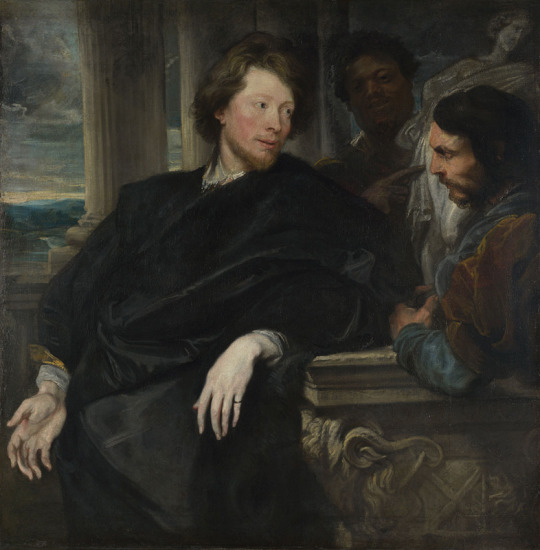
The Spanish cleric, Don Justino de Neve, by Bartolomé Esteban Murillo, 1665:

Actually, we could pop across the Channel to the Rijksmuseum in Amsterdam and look at these two extremely solid Dutch citizens, painted by by Joos van Celve in 1518 and Maarten van Heemskerck in 1529 respectively:

And how could I ever forget the Nobleman with Hand on Heart, by El Greco, in the Prado of Madrid, about 1575-1580:

Actually, let's skip back for a moment to this rather lovely geometric and floral moonscape of a patterned robe and gown ensemble, which I don't have a lot to say about:

And then admire the splendid sleeve of Gerolamo Barbarigo, by Titian, 1510:

Finally, the classic luxury black with white linen glimpsed at the throat has always been at least potentially a unisex style, and so I cannot resist showing you Hans Holbein the Younger's absolute bombshell of a masterwork: Christina of Denmark, Duchess of Milan, 1538. A widow, fifteen years old.

Holbein was a truly wonderful painter and I especially admire his portraits of women (look at this one!) for the way he makes us look completely real, normal, subjective and autonomous and also incredibly sexy, although his portraits of men are occasionally just as stunning (Kunsthistoriches Museum, Vienna). Here, he has painted a dimple in the act of appearing, because he was just that good. This portrait is close to life-size, it's in the National Gallery in London and if you ever get the chance to stand in front of it, do.
The DFQC costumes master post is here.
#love between fairy and devil#cang lan jue#costumes#lbfad#cdrama#cdrama visual world#western art history
49 notes
·
View notes
Text
Galatea the Nereid (Sea Nymph) and her Love Triangle
Western Art has a love affair with ancient Greece and Rome. Many different myths and historical (*cough*semi-historical*cough*) events.
In ancient Greek Mythology, there were two women named Galatea. One was a woman who was carved out of marble and brought to life, and the other was one of the fifty Nereides. Both women were to be the subjects of paintings, sculptures, and operas of different artistic periods because both women are at the center of love stories. Although their love stories differ, love stories are an enduring tale and are something that fascinate people throughout the ages.
This little blog post will focus on Galatea the Nereid.

Daughter of Nereus, the 'Old Man of the Sea,' and the Oceanid Doris. She is one of 50 sisters who lived with their father in his grotto in the Aegean Sea. Thetis, mother of Achilles, and Amphitrite who was Poseidon's queen and mother of Triton, were two of her more famous sisters. Galatea means Milk-White and she was a goddess of calm seas. Like her sisters, she was a protector of sailors and the sea's bounty, and like her sisters she was beautiful. She frequented the shores of Sicily and caught the eye of Polyphemus. Polyphemus has a legacy of his own right. A cyclops, a man-eater, and was blinded by Odysseus after trapping him in his home. This son of Poseidon and a nymph who was the child of Phorcys named Thoosa. Her name is only given to us by the poet Homer, but that would make her a sibling to Echidna, the Hesperian Dragon, the Gorgons, and the Graeae. Which gives us a better understanding of Polyphemus' portrayal in the early myths.

Polyphemus loved her, and gave her cheeses, milk, and played the pipes for her. But she spurned his love because she had fallen in love with another. Acis was a handsome Sicilian youth whose father was Pan and whose mother was a river nymph. He would mock Polyphemus's love and one day while Galatea and Acis lay in a grassy field beneath Mount Etna he took a bolder from the mountain and crushed the youth's head. From the blood that poured out the grieving nymph turned him into the River Acis, and him into the god of the river with horns and a blue face.
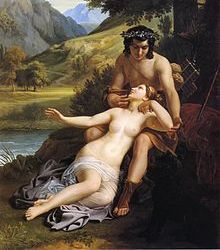
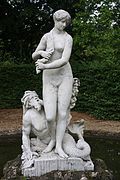
This version of the tale was recounted by Ovid in book three of Metamorphoses. But even later, we get tales of Polyphemus and Galatea's love. Where he is able to woo her with music and lure her to Sicily to be with him. This is thought to try to explain why there was a shrine to her on the shores. So the story of a Cyclops tied to the land and a sea nymph who couldn't leave the water's love was the explanation that Philoxenus of Cythera came up with as an explanation.
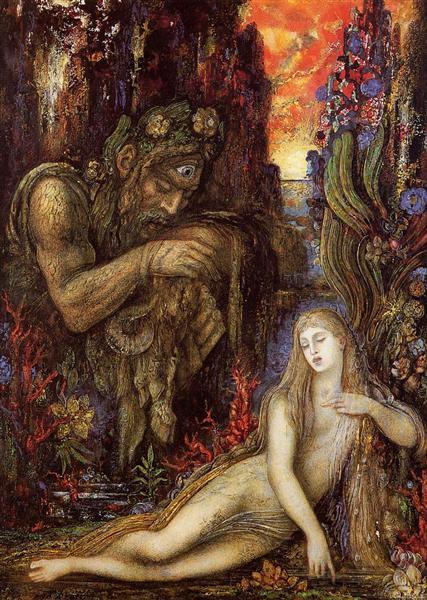
They also have a child together named Galatos who was to become the ancestor of the Gauls.
In art, around the Baroque period, the love triangle between Galatea, Polyphemus, and Acis picked up popularity in operas and artistic representations and the popularity would continue through the Romantic and Academic periods along with other Greek Myths. In statues a way to tell the nymph from her counterpart is she is often depicted with sea pearls in her hair, a garland of shells and pearls adorning her, billowing scarves, tridents, or dolphins.
One of my favorites is from Gustave Moreau, Where he doesn't look deeply into the love triangle, but instead focuses more on the beauty and the beast aspect of Ovid's tale and we get some beautiful pieces. The movement Moreau was part of is known as Symbolism, and I personally find the colors, the composition, and the details to be very compelling and expressive of the stories they are trying to tell in their art.
Anyway. I hope you like the story of Galatea, and looking at some of the art. I hope to do the story about the other Galatea, aka the statue that came to life soon.
#art history#greek mythology#galatea the nymph#greek myth art#greek myth#western art history#This is a special interest if I get things wrong please correct it#I like to learn
6 notes
·
View notes
Text

yeehaw, baby!
#if u know me u knew this was inevitable#kon el#conner kent#tim drake#timkon#im gonna ramble after the boring tags ok#dc comics#fanart#western au#superboy#OK !!!! ITS TIME#so kon. obvs is a cowboy here#definitely a bit of a magnet for trouble but not an outlaw#still not the sort of person the son of the drake family's supposed to be talking to but yk kon's gonna try anyway#on tims end it pretty much follows the same events as the comics bc if it aint broke dont fix it#<- in terms of the whole sneaking out at night to do his own secret detective work thing at least#i have a whole silly story for the rest of it but im not gonna get into it all here lmao#but yeah i love cowboys and actual cowboy history vv much so this probably wont be the last u see of this au ദ്ദി ˉ꒳ˉ )✧#for now this post's rlly just for goofing around with design ideas#my art
11K notes
·
View notes
Text

Weapons and Physiognomy of the Grizzly Bear, George Catlin, 1846-48
#art#art history#George Catlin#genre painting#genre art#animal study#bears#grizzly bear#animals in art#American art#Western art#19th century art#oil on canvas#Smithsonian American Art Museum
2K notes
·
View notes
Text
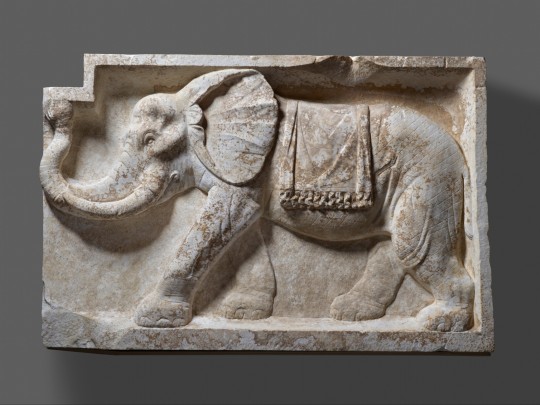
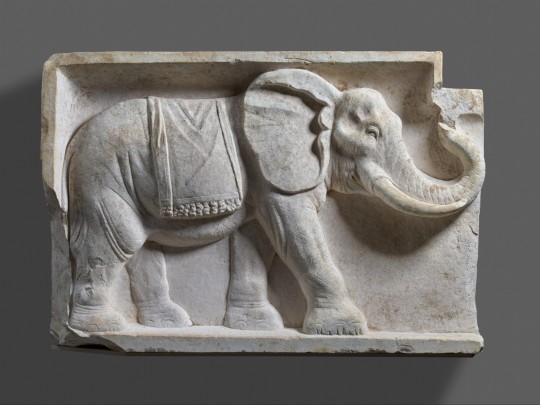
~ Pair of Architectural Reliefs with Elephants.
Date: A.D. 80–100
Culture: Roman
Place of origin: Western Roman Empire
Medium: Italian marble
#ancient#ancient art#history#museum#archeology#ancient sculpture#ancient history#archaeology#getty#western roman empire#roman#architectural relief#elephants#a.d. 80#a.d. 100#Italian marble
2K notes
·
View notes
Text
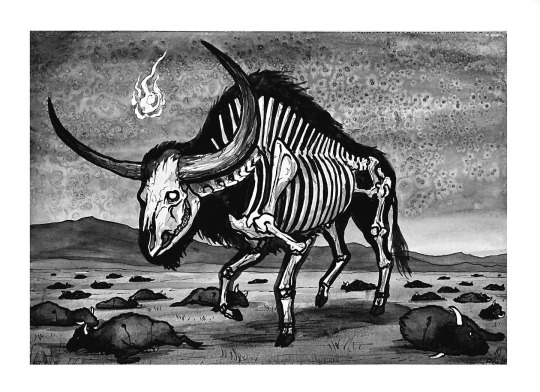
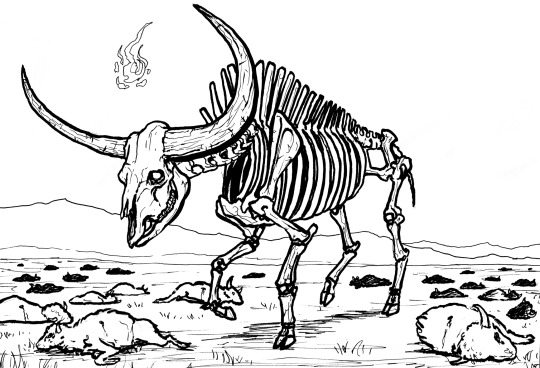
“Manifest Destiny”
Day 26 - Remove
One day the World will say, 'I am no more and I have nothing left to give.’
#illustration#my art#drawing#nature#inktober#western gothic#horror#watercolor#dark art#gothic americana#manifest destiny#extinction#macabre#prehistoric#steppe bison#art history#skeleton#surrealism#inktober 2023#bison
3K notes
·
View notes
Text

Sir Edward John Poynter (French-born British, 1836-1919) Faithful Unto Death, 1865 Walker Art Gallery, Liverpool, UK During the excavations at Pompeii in the early 19th century, the skeleton of a soldier in full armour was discovered. Romantic historians of the period assumed that he had remained loyally at his post while all the other inhabitants of Pompeii were fleeing from the eruption of Mount Vesuvius in 79 AD.
#art#fine art#european art#europe#painting#european history#saint#european#classical art#fine arts#french art#france#french#british#united kingdom#pompeii#mediterranean#europa#world history#classic#soldier#western civilization#the west
681 notes
·
View notes
Text
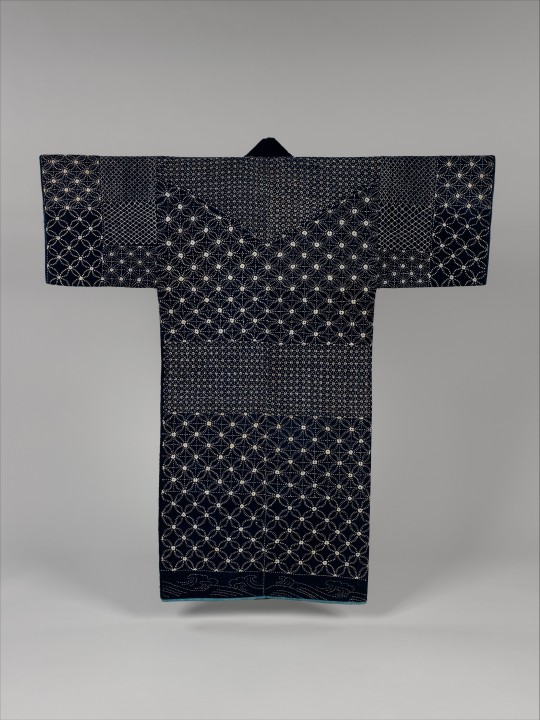
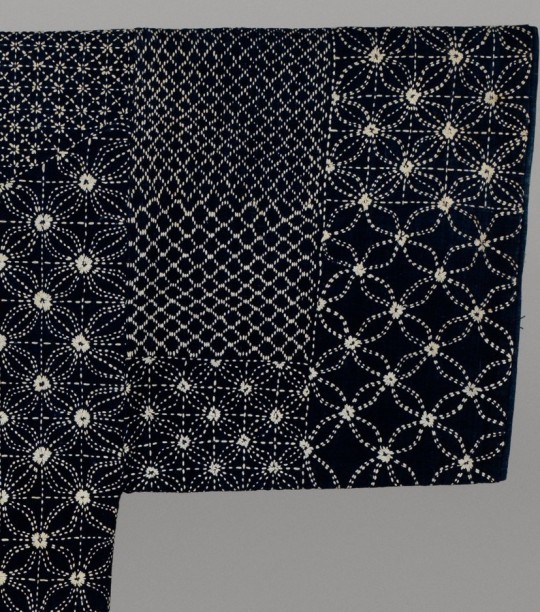
Sashiko Jacket
1850-1899 (Meiji Era)
Japan
Sashiko is a quilting technique that uses a running stitch to reinforce and prolong the life of a textile or to join together recycled pieces of cloth into a new garment. Japanese farmers used the technique to create warmer and more durable fabrics, and decorative sashiko stitching developed from this practical function. This robe’s embroidered design is dominated by three variations on the pattern of interlocking circles, called shippō-tsunagi. The bottom band features a design of waves.
The MET (Accession Number: 67.172.1)
#sashiko#fashion history#historical fashion#japanese fashion#non western fashion#japanese art#19th century#meiji era#quilting#japan#blue#off white#cotton#robe#jacket#1850s#1860s#1870s#1880s#1890s#the met
1K notes
·
View notes
Text
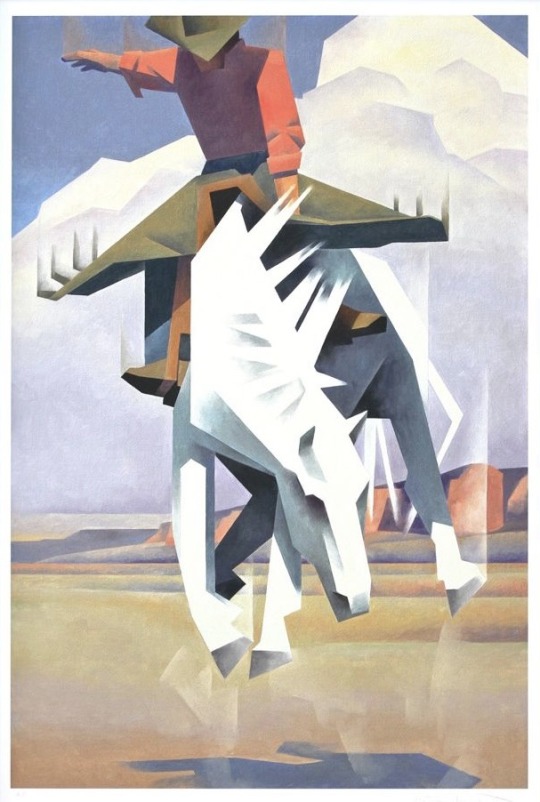
Ed Mell
This Palomino Ain't No Pal of Mine
#ed mell#western art#american art#american painter#american artist#american painting#cowboy#cowboy art#horses#beautiful horse#horse art#horseback riding#equestrian#animals in art#animals#animal art#contemporary art#art history#aesthetictumblr#tumblraesthetic#tumblrpic#tumblrpictures#tumblr art#aesthetic#beauty#tumblrstyle
410 notes
·
View notes
Text
Guyz... Guess what I've been watching... (◍•ᴗ•◍)




#all quiet on the western front#all quiet on the western front 2022#aqotwf#paul baumer#kat#stanislaus katczinsky#im westen nichts neues#ww1#germany#german soldier#great war#history#fanart#art#digital art#doodles#soldier#war#movie#just let me doodle this pls pls pls i need to#i love them sm this is probably the only movie that i almost cried#ALMOST#i love them sm guys i rly do#i need them to be safe and happy#GUYS THEY DIDNT GET TO CELEBRATE CHRISTMAS TOGETHER IM SOBBING#THEY DESERVED BETTER 😭😭😭#guys y'all dont know how long it took me to draw the helments lmao#that's me panicking on the last pic by the way lmao#i promise I'll get back to drawing transformers after this lmao 😭😭
355 notes
·
View notes
Text
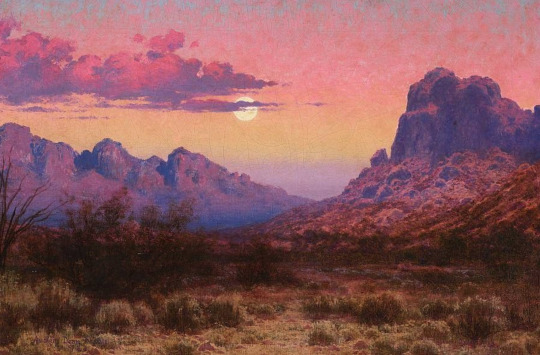
Desert at Dusk (1928) by Audley Dean Nicols
#art#traditional art#painting#oil painting#oil on canvas#1920s art#1920s#1928#history#art history#Audley Dean Nicols#20th century#20th century art#american art#american history#landscape#wild west#western art#desert#cowboy aesthetic#cowboy
579 notes
·
View notes
Text
Controversial Public Art
I am not someone who believes art is just meant for museums or for hanging in your homes. Although those are amazing places for them, I feel art is meant to be experienced in aspects of our every day lives. Out in the world as we walk through it. So I am a huge advocate for public art.

Very briefly that is defined as:
"Public Art is Artwork in the public realm, regardless of whether it is situated on public or private property, or whether it is acquired through public or private funding. Public art can be a sculpture, mural, manhole cover, paving pattern, lighting, seating, building facade, kiosk, gate, fountain, play equipment, engraving, carving, fresco, mobile, collage, mosaic, bas-relief, tapestry, photograph, drawing, or earthwork" -Jack Becker Monograph 2004
Public art is a way to beautify your spaces, express the unique aspects of your community and express the different culture and values of the people who live all around you. It can Commemorate events, people, or important groups that and their impacts to society. However, as with all art, you can't avoid controversy. Whether it be from who paid for the installation, to the subject matter. From proper representation, to where the piece is placed. What medium is used in its creation, or who the artist is. All of these things can lead to communities having a strong backlash to artistic pieces being displayed and some even turn to violent outbursts against the art or even their creators.
This is a list today I would like to discuss some controversial public art pieces. Maybe I will go more in depth about some of them later, but these are some big ones that stick in the public conscious today.

Richard Serra's Tilted Arc



This is a 12 foot tall, 120 foot long tiled steal plate that ran through Manhattan's federal plaza from 1981 to 1989. This wall forced people to take an inconvenient route through the plaza for most of the 80's. The goal of the piece was to inspire the viewer to become aware of themselves and their movement through the plaza, but it caused an imposition on government workers. The piece had a lot of support of modern artists,but by 1985 there was a hearing to remove the Arc and a court voted 4-1 to remove it. Due to the artists insistence that it never be displayed again it is now in government storage.

How Ya Like Me Now? by David Hammond


Painted in 1988 and commissioned by the Washington Project for the Arts for an exhibition on black culture and modernism this 14 foot by 16 foot billboard was poorly received to say the least. Local youths did not connect with the artists intended message of how popular culture was co-opting and commodifying black identity and whitewashing it. They interpreted it as racist so they tore the display down with sledgehammers. The piece was later reinstalled with the sledgehammers as part of the final piece incorporating the vandalism and backlash into the final work only this time it is inside the gallery and not on a street corner across from the National Portrait Gallery in D.C.

Just kidding , I couldn't find a good artist photo
Traffic Light Tree by Pierre Vivant
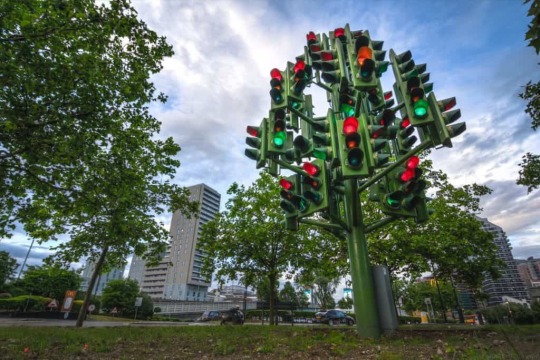
A sculpture originally located in Canary Wharf London in 1998 after a competition run by the Public Art Commissions Agency. It was moved to Billingsgate Market. It stands at 8 meters or 26.24 feet tall and has 75 sets of traffic lights. Vivant stated that it was to represent adjacent plane tree and the restless rhythm of the city. It was installed to replace a dying plane tree in the center of a roundabout, but the controversy arose when motorist confused the installation as an actual traffic light. Despite the initial controversy it has won over the city and is now viewed as one of the most pleasing roundabouts, although it still does cause confusion with tourists.

Martin Luther King Jr. Memorial by Lei Yixin


Built in 2011 this sculpture was controversial from start to finish. Recognized as a master sculptor in China and having sculpted monuments that included the communist leader Mao Zedong, his appointment to sculpt the Dr King statue was protested due to members of human rights organizations decrying the appointment of his visual support of the CCP. Others felt that the statue should have been done by an African American artist. They disliked the use of Chinese granite and not American granite. The quote engraved on the side was abridged in a way that changed the meaning and upset many, to the point where a year later it was removed to now only show abstract striations.

Tree by Paul McCarthy
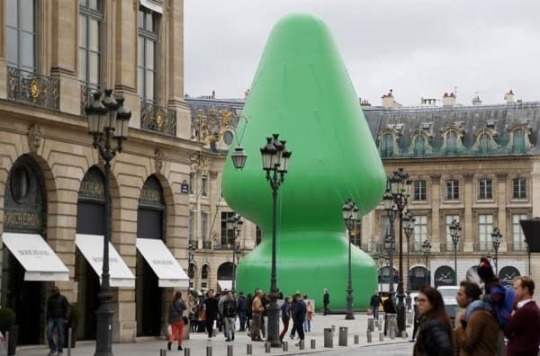
Displayed in October 2014 at the International Fair of Contemporary Art in Palace Vendôme in Paris this abstraction of a Tree in a reminiscent way of a modern impressionist was a 24 meter or 78.74 foot tall green canvas butt plug shape because he thought they looked similar to trees so he created it as a tree abstraction. He was actually assaulted by someone while installing it, and it was destroyed two days later because some people thought it was offensive to children. Tree was displayed again in 2016 at Paramount Ranch 3 and it was well received by visitors.

Dirty Corner by Anish Kapoor


I feel a list of modern controversial art wouldn't be complete without Anish Kapoor, but my feelings are not why he is on the list. It is because he is a controversial artist. All his controversies deserve a post of their own, so only one is on this list. This art piece was created in 2011, but when it was brought to the Palace of Versailies in 2015 is when it hit its peak. The 60 meter (196.85ft) long and 8 meter(26.25ft) tall cone was described by Kapoor as "the vagina of a queen who was taking power". Critics hated the sexual nature and its nickname is "the Queen's Vagina." The idea was to enter the cone shaped piece and loose your perception of space the deeper you went into it. People vandalized the piece with antisemitic slurs as Kapoor's mother is Jewish. After some legal fights and wanting to leave the vandalism as a statement to the horror and intolerance of humanity, he was ordered to cover or remove the vandalism. He chose to cover it with gold leaf as "a royal response" the piece is no longer on display in France.
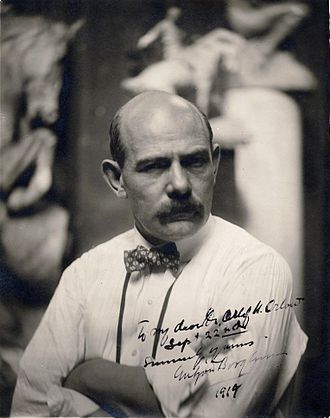
Mount Rushmore National Memorial by Gutzon Borglum


Sculpted from 1927 to 1941 This might be a controversial one to add for many Americans. But I wanted to focus on the 20th and 21st centuries and so I feel I would be remiss to not add this monument to America. Carved in the Black Hills of South Dakota by a close friend of Teddy Roosevelt and known Klan associate. This monument to the greatness of American expansionism in the early 20th century is also a monument to how American presidents directly participated, through policy or active participation in the taking and desecration of Native American lands. The Black Hills are considered a Holy Site to the Lakota people, and in the Fort Laramine Treaty of 1868 it was considered exempt from white settlement forever. But gold was discovered so the treaty was violated. Where Mount Rushmore is located is also home to Custer State Park, named after an American general who actively participated in the violation of the Treaty. Mount Rushmore was meant to be a Monument to America's Greatness as embodied by our Presidents, but it at the same time is a symbol of our expansion, treaty violations, and exploitation of the land and people of this nation. It remains a site of protest, the rock itself isn't great for carving and people think about adding more to it. The National Park service have dismissed the idea of altering it at all. People are divided about the site to this day. Some want it destroyed, some want to use it for education, but i have to say the National Park splash page doesn't help much with the education, and some just want the Lakota people to have their Holy Site back. The Lakota won a lawsuit for 17+million dollars, but they also just want the Land and not money as it is a holy site, and they continue to protest. The carving can not be undone, so the site remains a divisive reminder of American History that is often just a footnote in the education of most.
If you can think of any public artwork that you think is controversial please share it! Even if its just a public art work that someone has in their lawn that people in your community cant stand. Art should promote discussion, learning, and growth!
#art#public art#controversial#controversial art#anish kapoor#richard serra#david hammons#pierre vivant#paul mccarthy#lei yixin#gutzon borglum#art history#western art history
3 notes
·
View notes
Text


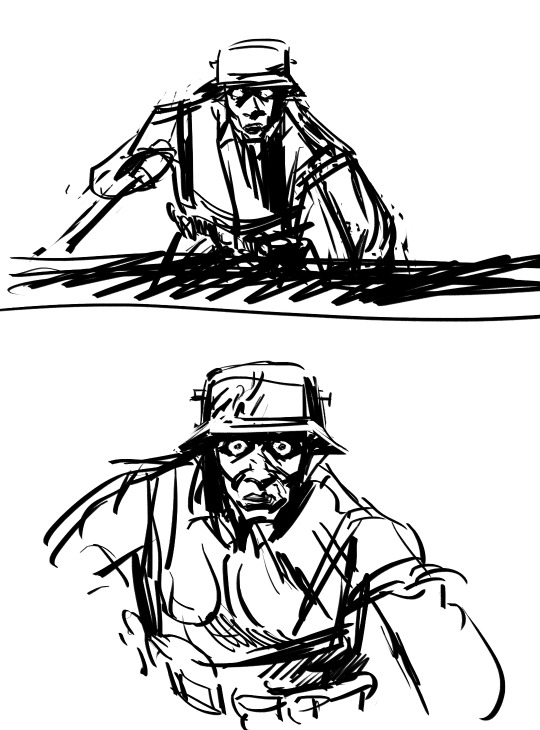

took some old concept art for my cover and made more concept art
i do quite like the premise because the scene it's referencing is kind of the most important one but i'd still play around with fonts more (i'd go for freehand) + make a more detailed version of this in the future
#art#ww1#all quiet on the western front#comics#im westen nichts neues#history#concept art#digital art#paul bäumer
145 notes
·
View notes
Text

Erich Maria Remarque you have ruined me
#i’m on a work trip rn for one of my jobs so i can’t post a ton of art but i AM reading this book for the 20th time#i need to find every person who’s ever read this book and sit them down. and look at them. that’s all#page 94-97. oh man. oh boy!#giggle. i’m so normal#all quiet on the western front#erich maria remarque#paul baumer#stanislaus katczinsky#those yellow boots are haunting the narrative#you ever look at your comrade roasting a goose and think yes i am experiencing the horrors but his shadow is home#and he holds the world on his shoulders#he is my comrade and he is mt brother and he is and he is and he is#wwi#wwi history#wwi literature
148 notes
·
View notes
Text
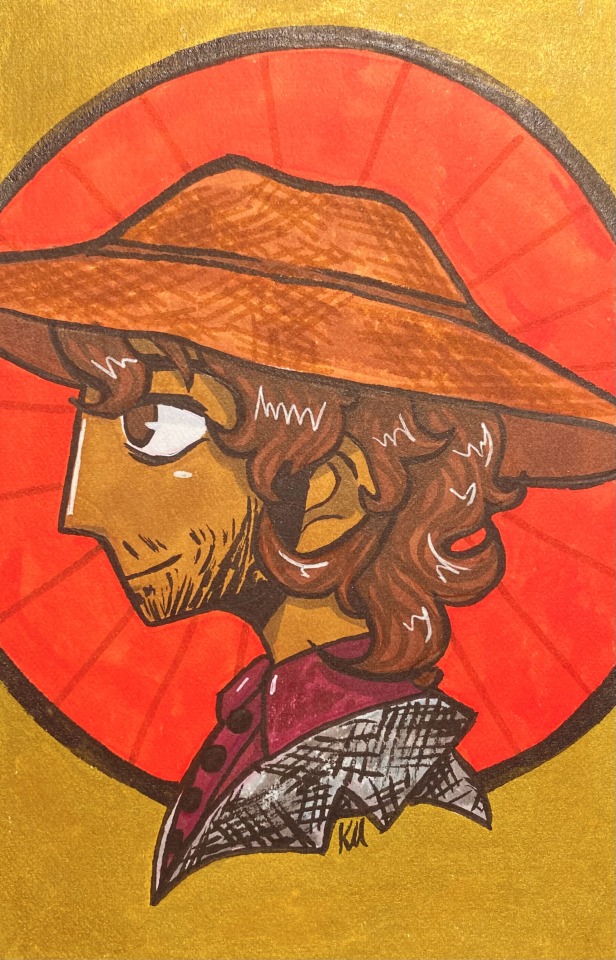
Yeehaw it’s my favourite western character Texas man from British vampire gothic horror by famous Irish guy
#I made this awhile back and was waiting for a big Quincey day to post this but fuck it I love how this turned out#quincey morris#quincey p morris#dracula#dracula daily#re dracula#re: dracula#Art#traditional art#artwork#illustration#markers#alcohol markers#lol I’m actually a huge western enjoyer (but no one else around me is so I basically have no interaction with the genre :( )#I used to find the southwest as a setting boring but then my family dragged me out to Utah and Arizona and something just clicked#Like. Oh. These are beautiful vast areas with a stunning geography and a vibrant history and culture#And out west 110 Fahrenheit feels like 80 Fahrenheit which was crazy to me (I made sure to wear a lot of sun protection)#I also realized I was gay and that played into it
187 notes
·
View notes
Text
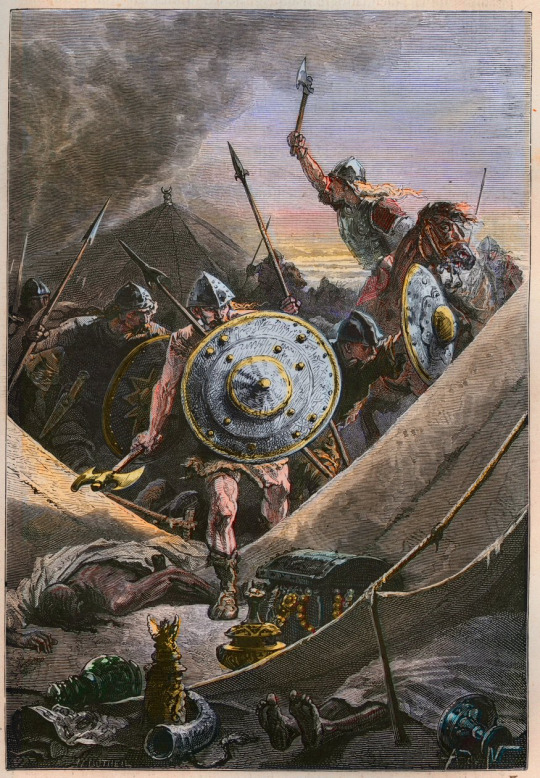
Attack on a Moorish camp - Defeat of the Saracens at the Battle of Tours, AD 732 — by Alphonse de Neuville
The Franks led by Charles Martel attack the Saracen camp at the Battle of Tours, halting the Muslim invasion in the year 732
#charles martel#battle of tours#battle of poitiers#franks#frankish#moors#invasion#germanic#france#art#alphonse de neuville#history#middle ages#medieval#europe#european#islam#muslim#christian#christianity#tent#battle#civilisation#civilization#western civilization#western civilisation#western europe#alphonse marie adolphe de neuville#french#treasure
206 notes
·
View notes